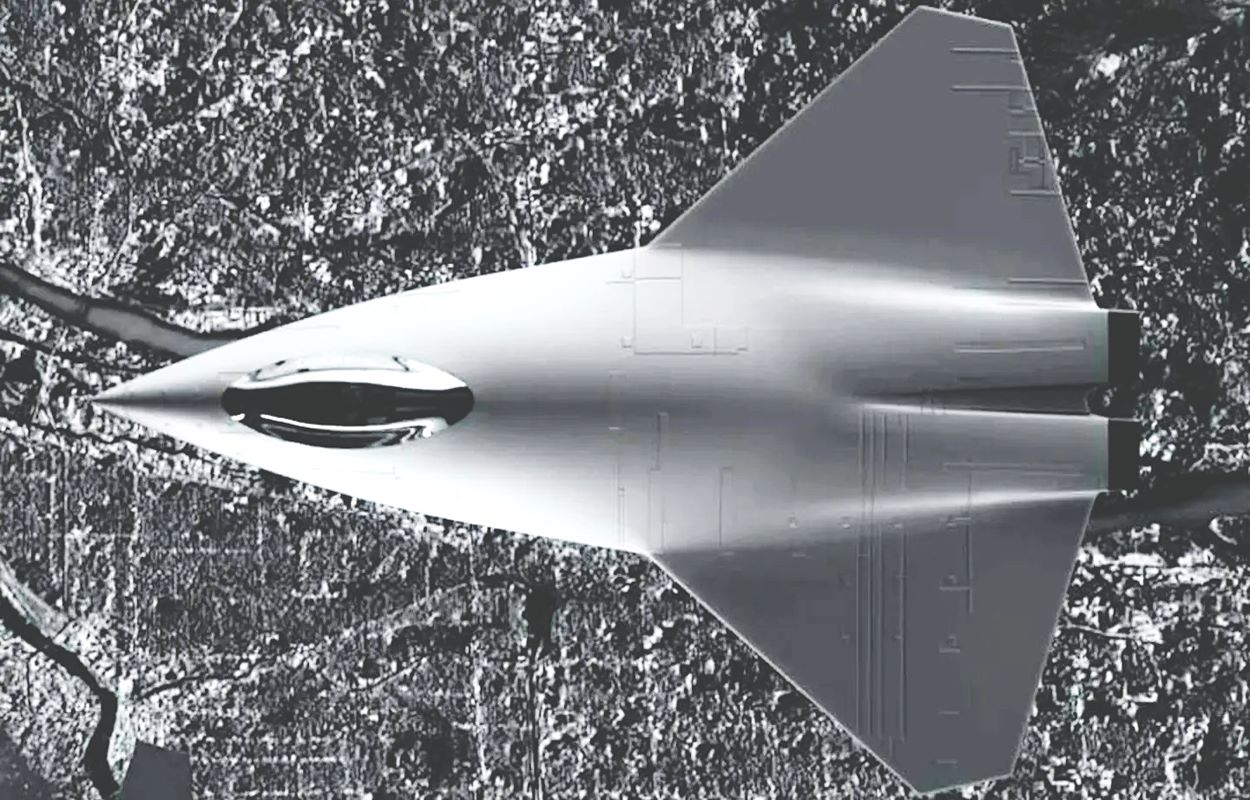Like many Western nations, Russia is keen to develop a sixth-generation combat aircraft. Reports indicate that the new aircraft will result from detailed research, collaboration, and consultation with military specialists.
According to state media TASS, Russia is actively setting its sights on developing a sixth-generation fighter jet that could be deployed by 2050.
The development was disclosed by Evgeny Fedosov, Scientific Director of the State Research Institute of Aviation Systems (GosNIIAS) and a distinguished member of the Russian Academy of Sciences.
Fedosov outlined the initiative in a column published by TASS, shedding light on the ongoing discussions and research surrounding the conceptualization of the sixth-generation aircraft.
According to Fedosov, the development process involves extensive consultation and collaboration with military specialists to anticipate the demands of future armed conflicts.
“Currently, we are thinking about the concept of a sixth-generation aircraft, conducting research and exchanging views with military specialists,” he said. Fedosov, however, highlighted a critical concern regarding the design complexity of next-generation combat aircraft, describing it as a potentially “vicious practice.”
He pointed out that with each successive iteration of military aviation, the size and weight tend to increase, inevitably impacting the cost of such equipment.
He also added that the sixth-generation combat aviation group will include both manned aircraft and unmanned vehicles.
“There is an opinion that the air group should be mixed and consist of drones and manned aircraft. Such a mixed park, in principle, can exist,” Fedosov remarked. He said that the size and speed of the drones would enable them to function as wingmen within a group.
Drones within these groups could be utilized to strike nearby targets. He stressed the necessity of human oversight to understand the tactical landscape post-strike. “But to understand the tactical situation after the strike, you still need a person,” Fedosov said. “And he has to work in the far zone so as not to be at risk of being shot down.”
Fedosov did not reveal whether the aircraft will be developed within a new program. Previously, Russia was said to be engaged in the Mikoyan PAK DP program, aiming to create a next-generation interceptor aircraft to succeed the Mikoyan MiG-31.
Debate Over Russia’s Sixth-Generation Fighter: Manned or Unmanned?
The concept of the sixth-generation fighter jet encompasses a new era of aerial warfare marked by advanced capabilities and cutting-edge technologies.
These next-generation aircraft are poised to redefine air superiority with enhanced performance in air-to-air combat and the ability to penetrate denied airspaces.
Building upon the success of fifth-generation platforms, sixth-generation fighters would be designed to adapt to evolving trends in aerial warfare, where traditional dogfighting scenarios are giving way to long-range engagements utilizing beyond-visual-range air-to-air missile capabilities.
In recent years, numerous countries have declared their intention to embark on the development of indigenous sixth-generation aircraft programs, illustrating a global push toward advancing military aviation capabilities.
The United States Air Force is a key player in this arena, actively advancing its efforts to develop a next-generation fighter jet through the Next Generation Air Dominance (NGAD) stealth fighter program.
Multinational initiatives have also emerged, reflecting a strategic approach to leveraging shared resources and expertise while mitigating development costs.

Japan, Italy, and the United Kingdom have united in one such venture, pooling their efforts to develop a sixth-generation aircraft called Tempest. Separately, France, Germany, and Spain have joined forces in a distinct multinational program.
China is also believed to be in the process of developing its sixth-generation fighter jet, having previously demonstrated its capabilities with the construction of the fifth-generation J-20 fighter jet.
On the other hand, Russia has encountered difficulties in deploying its stealth fighter jet, the Su-57, in large numbers. Moreover, discussions concerning the development of a sixth-generation fighter jet have previously faced obstacles.
EurAsian Times had reported that Russian planners held differing opinions on whether sixth-generation fighters should be manned or unmanned. However, Evgeny Fedosov has provided his perspective on whether the next-generation combat aircraft will be unmanned or manned.
.
Fedosov emphasized that while sixth-generation combat aircraft may incorporate advanced technologies, they will not transition to complete unmanned operations.
Fedosov emphasized the irreplaceable role of human pilots, stating, “We are trying not to replace a live pilot with a machine, but to create all the conditions for performing complex combat missions. I am convinced that it is impossible to exclude a person from a combat operation,” he stated.
While acknowledging the impressive processing capabilities of neural networks, Fedosov noted their limitations when it comes to intuition and decision-making in dire circumstances. “Aircraft are becoming increasingly more intelligent, but this is the usual automation of the control process,” he concluded.
- Contact the author at ashishmichel(at)gmail.com
- Follow EurAsian Times on Google News




